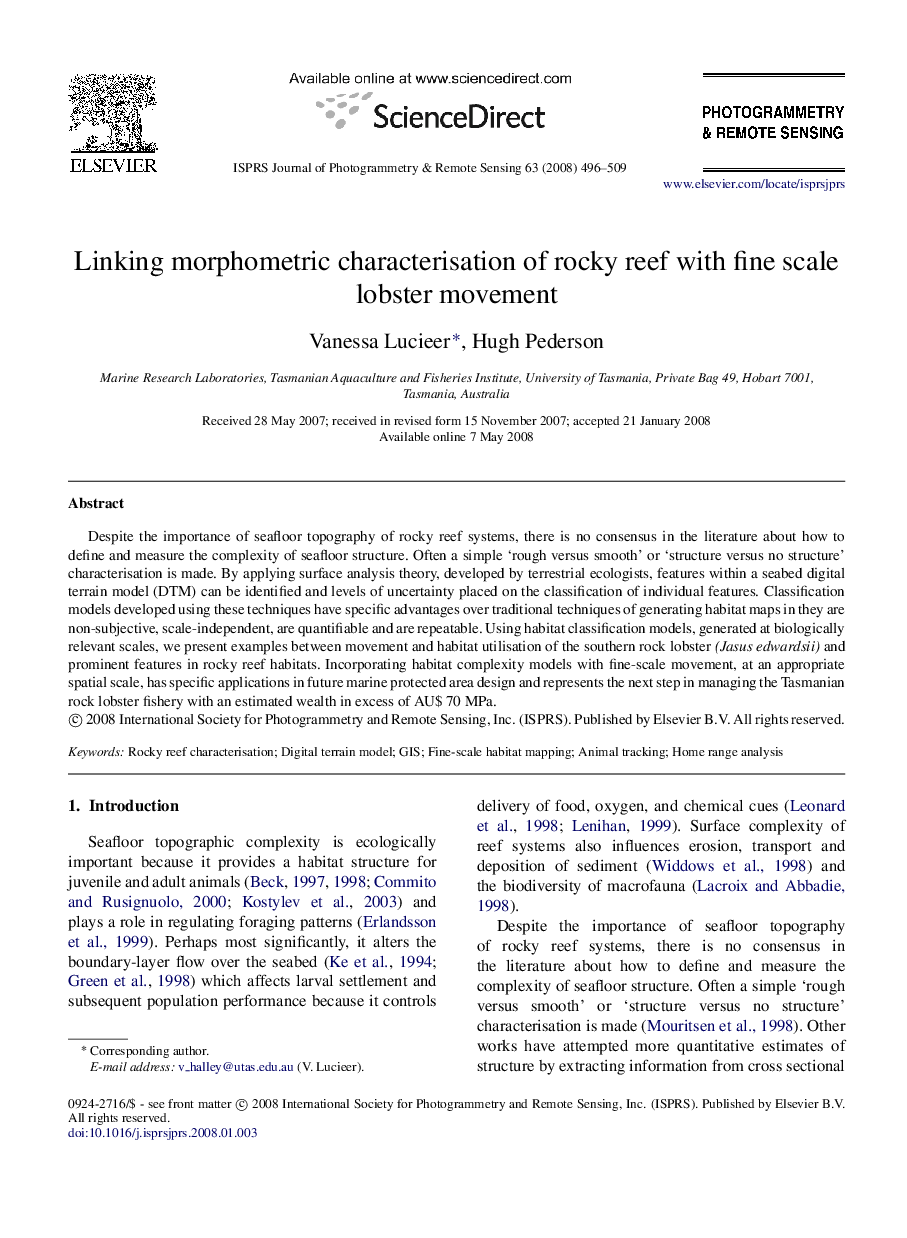| Article ID | Journal | Published Year | Pages | File Type |
|---|---|---|---|---|
| 556019 | ISPRS Journal of Photogrammetry and Remote Sensing | 2008 | 14 Pages |
Despite the importance of seafloor topography of rocky reef systems, there is no consensus in the literature about how to define and measure the complexity of seafloor structure. Often a simple ‘rough versus smooth’ or ‘structure versus no structure’ characterisation is made. By applying surface analysis theory, developed by terrestrial ecologists, features within a seabed digital terrain model (DTM) can be identified and levels of uncertainty placed on the classification of individual features. Classification models developed using these techniques have specific advantages over traditional techniques of generating habitat maps in they are non-subjective, scale-independent, are quantifiable and are repeatable. Using habitat classification models, generated at biologically relevant scales, we present examples between movement and habitat utilisation of the southern rock lobster (Jasus edwardsii) and prominent features in rocky reef habitats. Incorporating habitat complexity models with fine-scale movement, at an appropriate spatial scale, has specific applications in future marine protected area design and represents the next step in managing the Tasmanian rock lobster fishery with an estimated wealth in excess of AU$ 70 MPa.
